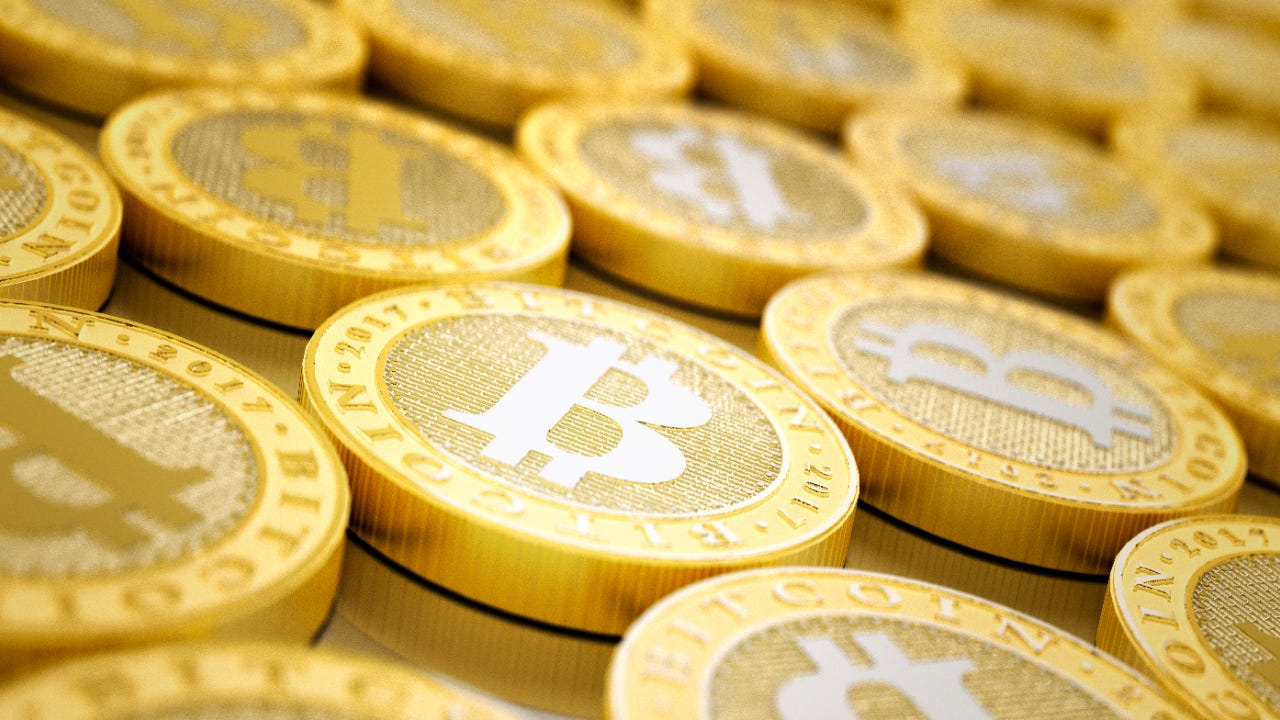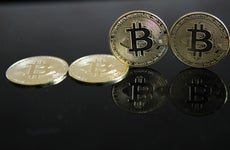Bitcoin price rallies above $38,000, cryptocurrencies moving higher

The Bankrate promise
At Bankrate we strive to help you make smarter financial decisions. While we adhere to strict , this post may contain references to products from our partners. Here's an explanation for .
Following a decline early Monday, the price of Bitcoin has risen throughout the day, hitting $38,569 in the mid-afternoon. For the world’s largest cryptocurrency it was a rise of 2.6 percent over the prior 24 hours, according to CoinMarketCap.
Ethereum also rose sharply from lows earlier in the day, trading at $2,683 on Monday afternoon – up 4.6 percent. In November, the second-largest cryptocurrency hit an all-time high of almost $4,900, and it’s now down around 45 percent from that level. This year has already seen the digital currency fall 24 percent.
Other top cryptocurrencies were largely higher as of Monday afternoon, with sharp turnarounds from significant losses earlier in the day.
- Terra – up 10.3 percent
- Polkadot – up 5.8 percent
- Solana – up 5.6 percent
- Avalanche – up 4.3 percent
- Binance Coin – up 2.8 percent
- Cardano – up 1.8 percent
- Dogecoin – up 1.7 percent
- Shiba Inu – up 1.5 percent
- XRP – up 0.9 percent
Cryptocurrency markets have been looking for support over the past week, after the Federal Reserve announced that it would soon lift interest rates and further reduce financial stimulus. Meanwhile, the market is awaiting further clarity from the Biden administration, after reports that it will soon file an executive order that directs the federal government to set policies and regulate digital assets such as cryptocurrency.
And on Monday morning, the president of El Salvador took to Twitter to predict a “gigantic” price rise in Bitcoin, citing the digital currency’s scarcity. The Central American country adopted the cryptocurrency as its official currency last year, and it’s likely lost money on its purchases so far, according to estimates from Bloomberg.
Bitcoin still well below 52-week high
Bitcoin’s price has been under serious pressure since the Fed’s early November meeting. The cryptocurrency topped out at nearly $69,000 in November.
From there, it’s been mostly downhill. The downtrend continued through much of December and into January. After peaking above $51,000 in late December, the digital currency fell to nearly $33,000 in late January. Bitcoin bounced off six-month lows set earlier in the week but remains down more than 17 percent since the start of the year.
Nevertheless, Bitcoin remains atop the list of most valuable cryptocurrencies by total market capitalization.
Fed signals rate increases on the way, bond buying to end
At its January meeting, the Fed announced that it was continuing to taper its purchases of bonds and expects to stop buying bonds by early March. The central bank also indicated that it was poised to increase rates soon, signaling what many experts expect will be a rate hike as early as March.
“With inflation well above 2 percent and a strong labor market, the Committee expects it will soon be appropriate to raise the target range for the federal funds rate,” said the Federal Open Market Committee in a prepared statement.
Now market analysts are expecting the Fed to increase interest rates at its upcoming March meeting. According to CME’s FedWatch Tool, the market is now pricing in a 100 percent probability that rates will rise in March. The only outstanding question is by how much. The market is expecting a 93 percent probability of a boost of 25 basis points, with the remainder projecting a larger 50-point hike.
“While we’re on the cusp of the Fed beginning to raise interest rates, the more significant step of starting to run off the balance sheet is still to come and the Fed provided no additional details in their post-meeting statement,” says Greg McBride, Bankrate’s chief financial analyst. “The combination of rate hikes and eventually shrinking their asset portfolio will complete the transition from going full throttle to putting the brakes on the economy.”
With inflation rising last year at the highest pace in 40 years, the Fed is looking to dampen price increases but not hit the brakes too hard. The resulting decline in stimulus has roiled financial markets in 2022.
Learn more:
- Bitcoin mining: What is it and how does it work?
- Bitcoin and crypto prices are volatile — What to do when they’re crashing
- How to start investing in cryptocurrency: A guide for beginners
Editorial Disclaimer: All investors are advised to conduct their own independent research into investment strategies before making an investment decision. In addition, investors are advised that past investment product performance is no guarantee of future price appreciation.
Related Articles

Bitcoin price slides below $43,000 in late Thursday trading, Ethereum comes off its highs


